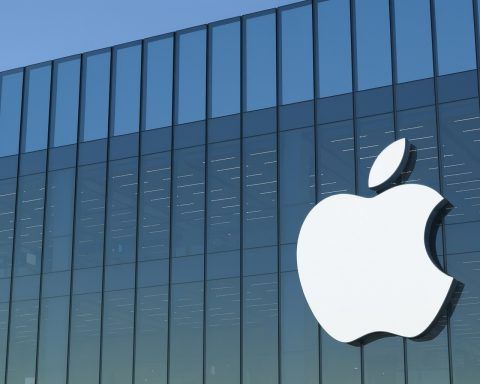- October Surge: FCEL stock closed at $8.95 on Oct. 31, 2025 – up 15.8% that day [1]. Over the past month it has rallied ~150%, trading near ~$11–$12 mid-October [2].
- Volatility & Volume: The stock has been extremely volatile (β≈4.2 [3]). October saw wild swings: e.g. FCEL spiked to $11.43 on Oct. 14 then fell to $7.73 by Oct. 30 [4], on unusually high trading volume.
- Market Capitalization: FCEL’s market cap is about $289 million (Oct 31) [5] – up ~58% from a year ago. Price/sales is only ~1×, price/book ~0.4× [6], reflecting heavy losses despite fast revenue growth.
- Recent Financials: In Q3 FY2025 (ended July 31), revenue doubled YoY to $46.7 million [7] [8]. Backlog (signed future orders) is large (~$1.245B) [9]. However, the quarter included one-time charges, driving a net loss of $91.9M (EPS –$3.78) [10]. Adjusted EBITDA loss improved to –$16.4M, but FuelCell remains unprofitable.
- Analyst Sentiment: Wall Street is cautiously neutral. No firm “Buy” ratings – consensus is Hold/Neutral [11]. The average 12‑month price target is roughly $8–$9 [12] (implying limited upside or slight downside from current levels). Some analysts raised targets (e.g. UBS to $7.25, Canaccord to $12 [13]), but others remain bearish (Weiss Ratings “Sell” [14]).
- Sector Drivers: The recent rally is driven by sector-wide news – big AI/data-center deals and bullish hydrogen/hydrogen analyst notes lifted all fuel-cell stocks [15] [16]. For example, a $5B Brookfield–Bloom Energy AI partnership (Oct 13) sent Bloom Energy shares up ~25% [17] and gave FCEL a halo lift. Similarly, an H.C. Wainwright upgrade of Plug Power (target doubled to $7) on Oct 3 sparked an earlier FCEL jump of ~16% [18] [19].
- Policy Tailwinds/Risks: Government incentives have been a boon – e.g. a recent US energy bill extended a 30% tax credit for fuel cells (through 2032) and clean hydrogen credits to 2028 [20]. But regulatory risks loom: a Republican budget bill (“One Big Beautiful Bill” Act) passed Congress in mid-2025, aiming to eliminate the 45V hydrogen production tax credit after 2025 [21]. If enacted, this could undermine long-term hydrogen economics, a point analysts warn could “have a chilling effect” on the sector.
Stock Performance & Technical Overview
FCEL’s chart has been a roller-coaster in October. The stock soared from ~$4 in August to trade above $11 by mid-October [22], reflecting the wave of excitement around AI and hydrogen. On Oct. 14, FCEL hit about $11.43 (a multi-month high) [23]. However, profit-taking led to a sell-off: by Oct. 16 it was near $9.30, and it drifted down to $7.73 by the Oct. 30 close [24]. Trading volume was well above normal during these swings, underlining speculative interest.
On Oct. 31 the stock bounced 15.8% to close at $8.95 [25]. (MarketBeat notes FCEL’s 5-day return was +12.6% and 3-month +80.4% [26].) Its 52-week range is roughly $3.58–$13.98 [27], so despite recent gains FCEL is still below its peak from early 2025. Technical indicators show a stock that has just broken above short-term resistance on heavy volume; momentum is positive, but historically FCEL’s chart tends to swing wildly (beta ~4.2 [28]). In sum, the stock is in a short-term uptrend but remains very choppy.
Recent News & Sector Catalysts
FuelCell itself had no major new press releases in late October [29]. Instead, FCEL’s movement has been driven by broader industry news:
- AI/Data Center Narrative: FuelCell’s management has been pushing the story that its molten-carbonate fuel cells are well-suited for AI data centers. CEO Jason Few has stated that surging power needs from AI applications are “an opportunity that FuelCell’s modular fuel cell systems are uniquely positioned to meet” [30]. In mid-2025 FCEL restructured to focus on carbonate fuel cells and cut operating costs ~15% [31]. Investors are watching whether deals (like its Korean projects) will translate to fast growth.
- Peer Success: News of big deals for peers has buoyed FCEL. Bloom Energy’s $5B Brookfield partnership (Oct 13) was a major catalyst – Bloom’s stock jumped ~25%, and FCEL rose ~8% on the day [32]. Similarly, analyst enthusiasm around Plug Power (a hydrogen rival) spilled over. (One note: Plug Power’s CEO Andrew Marsh recently said Plug is already “engaged and planning some initial deployment” of fuel-cell backup with the three biggest data center operators, and expects to see scaled deployments by late 2025 [33].) All of this created a “rising tide” lifting FCEL’s price.
- Financial Results: The only recent direct news was FCEL’s Q3 report (early Sept). Investors focused on revenue growth (up 97% YoY to $46.7M [34]) and a $1.245B backlog [35]. The massive backlog was seen as positive evidence of demand, even though Q3 also showed a deeper loss (net –$91.9M) due to restructuring charges [36]. Analysts noted that the current story is “growth first, profits much later.” Moody’s or Wall Street commentary emphasized that FCEL has “no breakeven expected until ~2030” [37], reminding investors that profit is distant.
- Industry Research & Opinions: Analysts and industry experts have been weighing in. For example, a Simply Wall St. analysis sees FCEL growing revenues ~34% annually to 2028 (to ~$310M) but still only reaching modest earnings by then, implying a fair value near $7.4 (about 30% below late-Oct prices) [38]. Others are more optimistic on the vision: UBS and Canaccord have recently raised targets on FCEL, citing the data-center thesis [39]. However, the consensus remains that FCEL carries a Hold rating with a median target around $8–$9 [40]. As one Motley Fool write-up put it, FCEL’s Oct. 3 surge (on Plug news) did not change the underlying fact that the company is “still unprofitable” with an uncertain path to break-even [41].
Fundamental Analysis – Growth vs. Profitability
FuelCell’s fundamentals are a mix of rapid top-line growth and deep losses. Key points:
- Revenue & Backlog: Over the past year FuelCell has ramped up sales. FY2025’s first three quarters show roughly $152M in revenue (about double the prior year) [42]. The Q3 uplift came from selling fuel-cell modules (notably to South Korea). Importantly, backlog (future orders under contract) stands above $1.2 billion [43]. This suggests a multi-year revenue stream if the projects are executed.
- Margins & Costs: The flipside is high costs. Gross profit remains negative (a ~$5.1M loss in Q3 [44]) despite higher sales. Operating expenses have ballooned due to restructuring and impairments – Q3 OpEx was ~$90M (up from $27M a year ago) [45]. These one-time charges (including a $64.5M impairment) drove the big loss. Excluding those, adjusted EBITDA loss is improving, but still negative. FuelCell’s balance sheet has a small net cash position (~$40M), giving it a low price/book (~0.4×) [46].
- Valuation: By standard metrics FCEL trades cheap on sales (~1× revenue [47]). Its enterprise value (~$211M) is roughly equal to last-twelve-month sales ($152M) [48], similar to peers like Plug but far below growthier names (Bloom’s EV/sales is ~45×!). The low valuation reflects big execution risk. The stock’s high beta (~4.2) indicates investors are treating FCEL as a speculative idea – one that could either soar on successful data center deals or crash if projects fall through.
- Future Outlook: Management has signaled that a turnaround in profitability is several years away. On the last earnings call, CEO Jason Few said the restructuring is “lowering costs, sharpening our focus on distributed power” and positioning the company for new growth [49]. The strategy is to leverage core carbonate fuel cells (a technology niche FCEL can sell worldwide) rather than diversify. Forecasts vary: some models see adjusted EBITDA still negative in 2025 and only modest profits by the end of the decade. Simply Wall St. projects FCEL generating ~$31.6M in earnings by 2028, but that assumes very aggressive revenue growth [50]. In short, the fundamentals hinge on execution: analysts will be watching whether the Korean deals and any new U.S. data-center contracts materialize as revenue.
Competitors & Industry Context
FuelCell Energy sits in the hydrogen and fuel-cell industry, alongside peers like Bloom Energy (BE), Plug Power (PLUG), and Ballard Power (BLDP). Key comparisons:
- Bloom Energy (BE): A much larger public fuel-cell firm (market cap ~$30B [51]). Bloom reported Q3 2025 revenue of $519M (+57% YoY) [52] and has turned profitable on a non-GAAP basis. Its CEO K.R. Sridhar has declared Bloom at “the center of a once-in-a-generation [AI] opportunity” [53]. Bloom’s recent deals (like Brookfield’s AI campus) have powered a 10× stock rally over the past year. By contrast, FuelCell’s share price is still modest. Bloom’s EV/sales is extremely high (~45× [54]), reflecting growth expectations. FuelCell, with a similarly advanced fuel cell technology but smaller scale, is seen as a lower-multiple play – if its backlog can be converted to sales.
- Plug Power (PLUG): Focused on electrolyzers and hydrogen, Plug has also run up on AI hype (up ~170% YTD [55]). An Oct. 3 H.C. Wainwright upgrade on Plug (driven by data-center demand) caused a spillover rally for FCEL. Plug’s Q3 results (due mid-Nov) are expected to show strong revenue growth and narrower losses. Plug is larger (EV ~$1.9B [56]) and still heavily loss-making, but it has bright projections from grid-scale hydrogen sales. Investors often compare FCEL and Plug as speculative hydrogen names.
- Ballard Power (BLDP): A Canadian PEM fuel-cell specialist. Ballard’s market cap (~$0.6–0.7B) is similar to FCEL’s. It, too, saw stock gains on AI/data-center news (reports indicate ~23% jump on the Brookfield-Bloom announcement [57]). Like FCEL, Ballard has no GAAP profit and trades on hopes of the hydrogen economy.
- Valuation: All these companies have negative earnings, so investors look at revenues/backlogs. By EV/sales, FuelCell (~1.4× [58]) is cheaper than Plug or Ballard, and dramatically cheaper than Bloom. FuelCell’s price/book ~0.4× [59] reflects its relatively strong balance sheet (c. $40M net cash). In effect, FCEL’s valuation implies modest upside if it can simply grow sales on schedule. Analysts note, however, that its path is riskier than Bloom’s because FCEL is smaller and further from scale.
Macroeconomic & Regulatory Factors
The hydrogen/fuel-cell sector is heavily shaped by policy. Two major factors:
- Federal Incentives (U.S.): FuelCell projects benefit from the federal Investment Tax Credit (ITC) for fuel cells (30% credit) and the 45V hydrogen production tax credit (from the Inflation Reduction Act). In mid-2024 a law extended the fuel cell ITC through 2032 [60]. However, on July 4, 2025 the new “One Big Beautiful Bill” (OBBB) Act signed by President Trump rolled back many clean-energy tax incentives [61]. Crucially, the House passed a provision ending the 45V hydrogen credit for projects starting after Dec. 31, 2025 [62]. Industry groups have warned that killing 45V “will definitely have a chilling effect on hydrogen” (FCHEA president Frank Wolak) – an outcome that could hurt FuelCell’s longer-term project economics. For now, FCEL is probably built on the assumption the credits remain (some signed projects count on them). Any major policy shift in Washington is a risk factor.
- Energy Demand & Prices: At a macro level, the surge in AI/data center power demand is reshaping markets. A Reuters report notes that by 2030, AI datacenters in the U.S. might need as much power as 5 million homes [63]. Traditional backup power (diesel generators) won’t cut it long-term under clean-energy mandates, so companies like FuelCell see opportunity. Also, rising electricity and natural gas prices (amid global inflation) make on-site fuel-cell power more attractive. Conversely, high interest rates and economic uncertainty can damp M&A and project financing; FCEL’s high beta means it can be punished if growth stocks fall out of favor (as happened briefly in Oct. 2025).
- Global and Industry Trends: Internationally, hydrogen is a focus of many governments (EU’s Green Deal, Asian hydrogen hubs), which bodes well for long-term demand. But standardization and scale-up challenges remain. FuelCell notes it has a global leadership position in carbonate fuel cells [64], especially in markets like South Korea and China (through joint ventures). Still, competition from emerging technologies (solid oxide, PEM, electrolyzers) means FCEL must execute to keep its edge.
The Verdict: High Hopes, Cautious Optimism
FuelCell Energy’s stock run in October reflects a potent narrative: fueling AI growth with clean hydrogen power. Short-term, momentum is clearly on FCEL’s side – investors are piling in on the “AI and hydrogen boom” storyline. Expert industry voices (e.g. Bloom’s leadership) praise fuel cells as a fast, reliable solution for data centers [65], and FCEL management has staked its future on that thesis. The company’s rapidly expanding backlog and quadrupling of sales in FY2025 Q1–Q3 [66] [67] lend credibility to potential.
However, most analysts remain on the sidelines. They note FCEL’s steep losses, the risk of project execution (and geopolitical/policy swings), and that its average price target (~$8–$9) is actually below recent trading levels [68]. In other words, the consensus view is that much of the good news may already be in the price. As Motley Fool cautioned, FCEL’s balance sheet is modest and profitability is distant [69].
Bottom Line: FuelCell Energy’s stock is a high-risk, high-reward play. Catalysts are present (big deals, tax credits, data-center demand), but they come with execution questions and policy uncertainty. Traders riding the momentum should watch if new contracts or partnership announcements arrive – those would justify the enthusiasm. Long-term investors should weigh the fundamentals: can FuelCell turn growing revenue into sustainable profits, or will it continue burning cash? For now, the market seems to say “maybe,” keeping FCEL’s price elevated, but most experts advise caution and note that the consensus target suggests little upside from here [70].
Sources: Company filings and news releases [71]; market data (MarketBeat) [72] [73]; TechStock² research [74] [75]; analyst reports and media (FinancialContent, Reuters) [76] [77]; industry commentary (Bloom Energy) [78]; stock analysis sites (Webull/SimplyWall [79], TipRanks, MarketBeat) [80] [81].
References
1. www.marketbeat.com, 2. ts2.tech, 3. ts2.tech, 4. ts2.tech, 5. stockanalysis.com, 6. ts2.tech, 7. ts2.tech, 8. ts2.tech, 9. ts2.tech, 10. ts2.tech, 11. ts2.tech, 12. ts2.tech, 13. ts2.tech, 14. ts2.tech, 15. ts2.tech, 16. ts2.tech, 17. ts2.tech, 18. ts2.tech, 19. stocks.observer-reporter.com, 20. ts2.tech, 21. www.h2-view.com, 22. ts2.tech, 23. ts2.tech, 24. ts2.tech, 25. www.marketbeat.com, 26. www.marketbeat.com, 27. ts2.tech, 28. ts2.tech, 29. ts2.tech, 30. ts2.tech, 31. ts2.tech, 32. ts2.tech, 33. www.reuters.com, 34. ts2.tech, 35. ts2.tech, 36. ts2.tech, 37. ts2.tech, 38. www.webull.com, 39. ts2.tech, 40. ts2.tech, 41. ts2.tech, 42. ts2.tech, 43. ts2.tech, 44. ts2.tech, 45. ts2.tech, 46. ts2.tech, 47. ts2.tech, 48. ts2.tech, 49. markets.financialcontent.com, 50. www.webull.com, 51. ts2.tech, 52. ts2.tech, 53. ts2.tech, 54. ts2.tech, 55. ts2.tech, 56. ts2.tech, 57. ts2.tech, 58. ts2.tech, 59. ts2.tech, 60. ts2.tech, 61. www.lw.com, 62. www.h2-view.com, 63. www.reuters.com, 64. www.utilitydive.com, 65. www.utilitydive.com, 66. ts2.tech, 67. ts2.tech, 68. ts2.tech, 69. ts2.tech, 70. ts2.tech, 71. ts2.tech, 72. www.marketbeat.com, 73. stockanalysis.com, 74. ts2.tech, 75. ts2.tech, 76. markets.financialcontent.com, 77. www.reuters.com, 78. www.utilitydive.com, 79. www.webull.com, 80. ts2.tech, 81. stockanalysis.com






